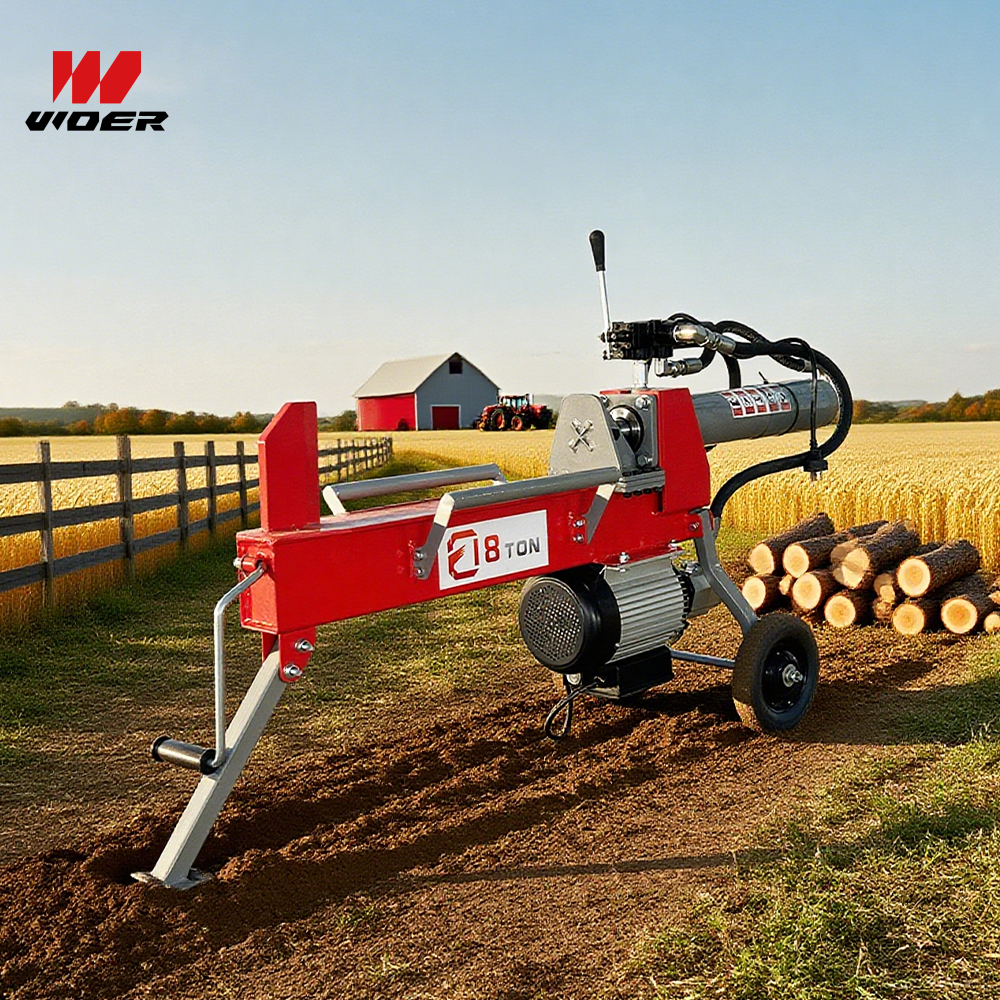Navigation
Contact us
Phone
Message

Choosing the Right Electric Log Splitter: Key Factors You Need to Know
1.Wood Type and Hardness
Softwood vs. Hardwood: If you're working with softwoods (like pine), a smaller electric log splitter will suffice. However, if you're working with hardwoods (like oak or walnut), you'll need a more powerful machine, and a higher-powered electric log splitter (e.g., 15 tons or more) is recommended.
Wood Size and Shape: Large or irregularly shaped logs may require additional power to handle, so a higher-powered machine will be more efficient.
2. Power and Tonnage
The power of an electric log splitter is typically measured in tonnage, with common tonnages including 8, 13, and 15 tons. When choosing a log splitter, ensure the machine's tonnage is sufficient for the size and hardness of the wood you're working with.
8-13 tons are suitable for small or home use, handling small to medium-sized logs.
15 tons and above are suitable for commercial or large-scale log splitting, requiring the handling of larger, harder logs.
3. Hydraulic System and Splitting Force
The design and efficiency of the hydraulic system directly impact the performance of the log splitter. Check the hydraulic pressure and splitting force to ensure they meet your wood splitting needs.
Splitting force generally increases with tonnage, and high-power hydraulic systems can easily handle hard and large-diameter wood.
4. Power Requirements
Electric wood splitters typically require different power supplies. Home electricity typically runs on 220V, while commercial use may require 380V. Ensure your power supply can support the equipment's needs.
Check the motor power. Home motors are generally smaller, while commercial motors are larger. Ensure your power supply can support these requirements.
5. Convenience and Operation
Weight and Convenience: If you need to move the wood splitter frequently, choose a lighter model that is easier to transport and store.
Ease of Operation: Ensure the wood splitter is ergonomically designed for comfort and is easy to start and control. Also consider the safety features of the electric wood splitter, such as an emergency stop button and a protective shield.
6. Brand and After-Sales Service
Choose a brand with a good reputation and excellent after-sales service. For example, brands like WOER have a strong reputation in the forestry machinery industry, offering consistent product quality and long warranties.
Review the product's user reviews, after-sales service policy, and repairability to understand the product's maintenance costs.
7. Additional Features
Automatic Feeding System: Some high-end electric log splitters are equipped with automatic feeding systems, which can improve efficiency and reduce manual intervention.
Splitting Mode: Some electric log splitters offer different splitting modes, allowing you to adjust the splitting mode based on the wood type, enhancing versatility.
8. Budget and Value for Money
Choose the right electric log splitter based on your budget and frequency of use. For occasional home use, choose a moderately priced machine; for commercial use, consider investing in high-performance equipment for increased productivity.
Make sure the product's price/performance ratio meets your needs. While ensuring quality, choose the best value for money.
9. Safety
Overload Protection: A good electric log splitter will often have an overload protection system to prevent damage if overloaded.
Stability Design: Ensure the equipment is designed for high stability to prevent accidents caused by vibration or excessive pressure during operation.
10. Environmental Considerations
Noise and Emissions: Electric wood splitters are generally quieter and emission-free than diesel engines, making them ideal for environments requiring low noise levels (such as near urban and residential areas).

This stunning beach house property is a true oasis, nestled in a serene coastal community with direct access to the beach.
Contact
West Street, Melbourne Victoria 3000 Australia